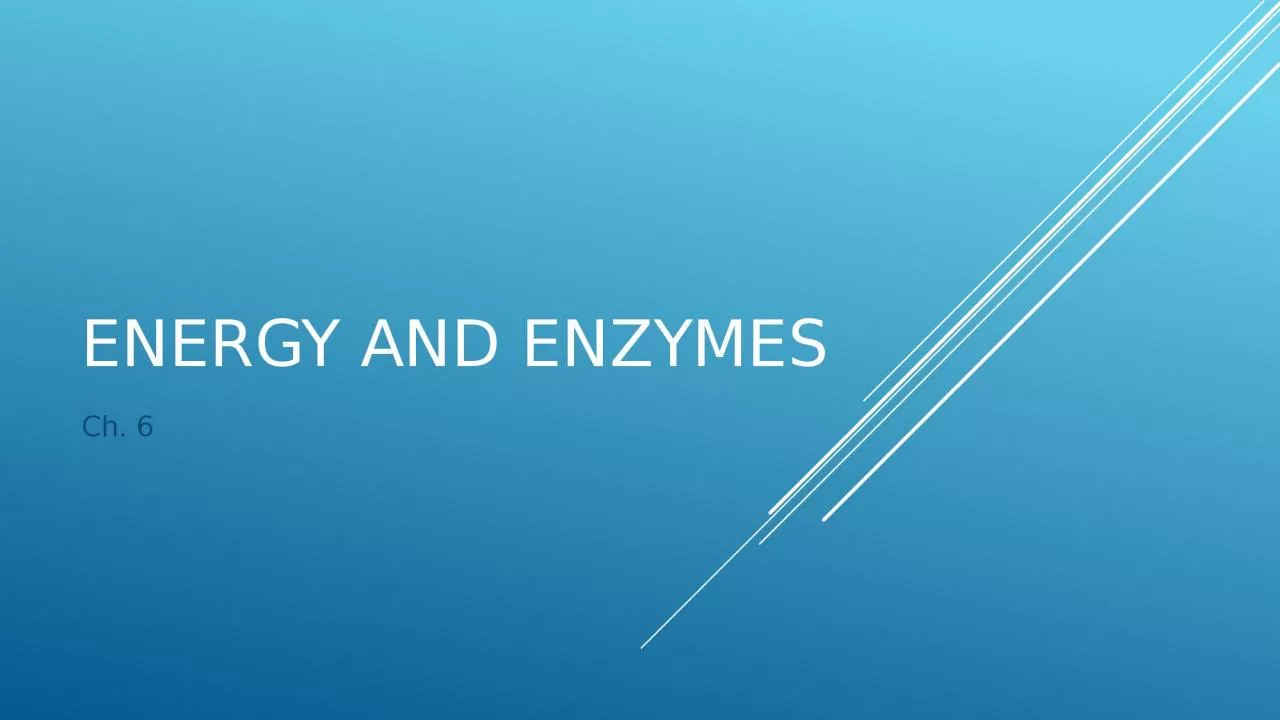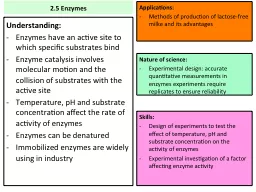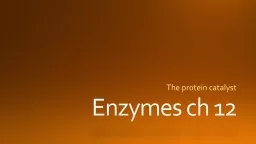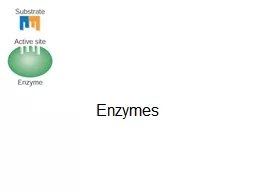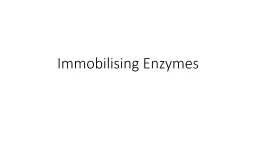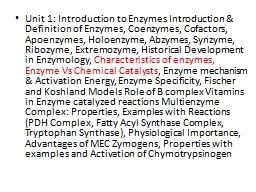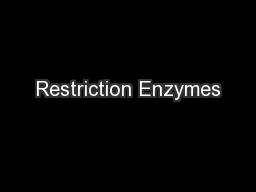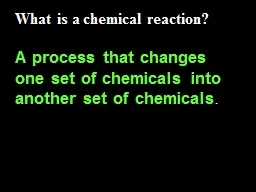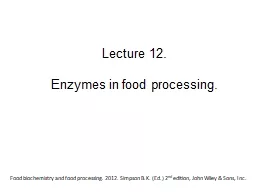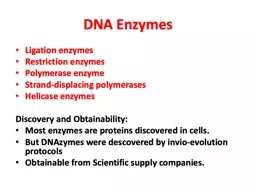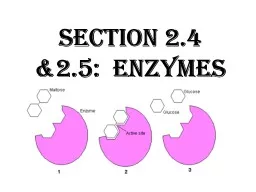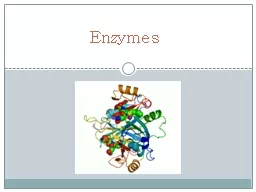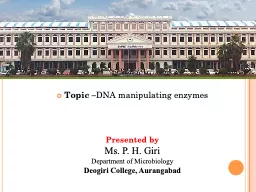PPT-Energy and Enzymes Ch. 6
Author : claire | Published Date : 2023-11-19
Flow of energy Energy is the ability to do work or bring a change There are 2 types of energy Kinetic Energy of motion Potential Stored energy Laws of Thermodynamics
Presentation Embed Code
Download Presentation
Download Presentation The PPT/PDF document "Energy and Enzymes Ch. 6" is the property of its rightful owner. Permission is granted to download and print the materials on this website for personal, non-commercial use only, and to display it on your personal computer provided you do not modify the materials and that you retain all copyright notices contained in the materials. By downloading content from our website, you accept the terms of this agreement.
Energy and Enzymes Ch. 6: Transcript
Flow of energy Energy is the ability to do work or bring a change There are 2 types of energy Kinetic Energy of motion Potential Stored energy Laws of Thermodynamics There is a constant flow of energy in biological systems . Chapter 2: Section 2.5. 1. Objectives. SWBAT explain the effect of a catalyst on activation energy. . SWBAT describe how enzymes regulate chemical reactions. . and maintain homeostasis.. 2. Starter: How can this be possible. Understanding:. Enzymes have an active site to which specific substrates bind. Enzyme catalysis involves molecular motion and the collision of substrates with the active site. Temperature, pH and substrate concentration affect the rate of activity of enzymes. ch. 12. The protein catalyst. Targets:. Describe the relationship between substrate and an active site in enzymatic reactions. Identify the role of coenzymes and enzymatic reactions. List factors that affect enzymatic activity. Reactions. Most reactions take place in a number of steps which need to be carefully controlled if the cell is to function properly. Enzymes are the most important controllers of cellular reactions. Catalysts. Enzymes as Catalysts. Enzymes are used to speed up chemical (metabolic) reactions e.g. respiration or photosynthesis- so why use enzymes in industry?. They are specific. can catalyse reactions between specific chemicals, even in a large mixture . Warm up. Grab warm up and complete. We will be putting this into your . journal. When you are done with your warm up look over your Vocab 1-1, you have a . quiz today. Biomolecule review. Cellulose, a structural component of the cell wall of plants and some forms of algae, is mainly used to produce paper and cardboard products. Cellulose would be an example of which type of biomolecule. Apoenzymes. , . Holoenzyme. , . Abzymes. , . Synzyme. , . Ribozyme. , . Extremozyme. , Historical Development in . Enzymology. , . Characteristics of enzymes, Enzyme Vs Chemical Catalysts. , Enzyme mechanism & Activation Energy, Enzyme Specificity, Fischer and . Presented by Fotios Patsalis . Bio . 446/546 FALL 2016. M/F 13.00-15.50h,. Castetter. . Hall 37. Restriction Enzymes: Molecular Scissors. Restriction enzymes (. endonuleases. ) are specific endonucleases which . protein. !. Enzymes are . Biological . catalysts . that . increase. . the rate of metabolic reactions.. Since enzymes speed up chemical reaction rates, what are they called?. Catalyst- . A substance . Food biochemistry and food processing. 2012. Simpson B.K. (Ed.) 2. nd. . edition,. John Wiley & Sons, . Inc.. Enzymes in food processing. Advantages.. Enzymes are proteins with powerful catalytic . Restriction enzymes. Polymerase enzyme. Strand-displacing polymerases. Helicase enzymes. Discovery and Obtainability:. Most enzymes are proteins discovered in cells.. But . DNAzymes. were . descovered. To the penny placed on your desk.. Observe the penny but don’t touch it. What happens?. Explain why. 2. Give the penny a . little . push. What happened?. Why did the penny move the second time and not the first time?. In order for chemical reactions to take place, . enzymes . must be present to help . speed up . the reaction.. Chemical bonds connect atoms. to make . molecules. .. Chemical . reactions. can do two things:. Presented . by. Ms. . P. . . H. . Giri. Department of Microbiology. Deogiri . College, Aurangabad. B.Sc. T. Y. . Semester VI. Paper No. XIX. Recombinant DNA Technology. Ms. . Priyanka. H. . Giri. DNA manipulating enzymes:.
Download Rules Of Document
"Energy and Enzymes Ch. 6"The content belongs to its owner. You may download and print it for personal use, without modification, and keep all copyright notices. By downloading, you agree to these terms.
Related Documents

